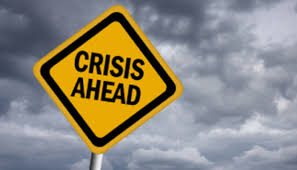
When it goes really wrong, do you have a plan?
Anyone who has a business needs a crisis communications plan. That plan should be reviewed on a regular basis and updated with potential new threats.
Your plan should address at least the top five things you could see going wrong. You need to have an overall statement about how your company will address the situation or fix the problem.
The plan needs to include a duty list and who holds responsibility in each area. You need to identify who will be your spokesperson. That person does not need to change throughout the crisis. You need to control the flow of information outside the organization. You need to demonstrate a concern for the problem and show that you or the organization are competent to handle or correct the issue. You need to be timely with your responses. Set scheduled updates for the media and social sites.
Never speculate when you are providing information for publication. Never say “no comment.” Say you’ll find out and let them know. Make sure you don’t minimize the issue. Don’t play favorites with the media. Make sure all sources receive the same accurate information.
Don’t forget about your internal audiences. The employees are probably fielding more questions than you. They need answers they can share that don’t spread speculation.
You may also have a group of special publics you need to notify. This could be investors or local government officials. It could also be your suppliers. Make sure you identify your publics when you identify your potential crisis situations.
None of us ever want to deal with a crisis, but in the communications business, more than likely one will land in the middle of your desk when you have the least amount of time to deal with it. With some planning and practice, you’ll be ready to deal with anything that comes your way.
Why “Thank You” Is the Leadership Secret You Can’t Ignore
Leadership is about many things—vision, strategy, execution—but perhaps most importantly, it’s about connection. And in those two little words, “thank you,” lies the simplest, yet most profound, way to connect. Start using them generously. Your team, your culture, and your bottom line will thank you.


